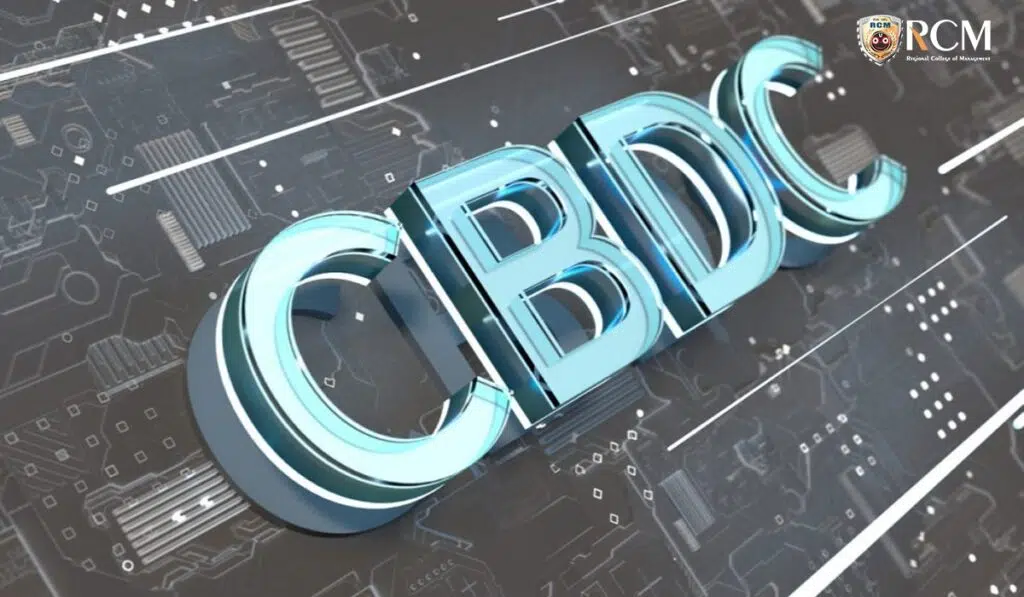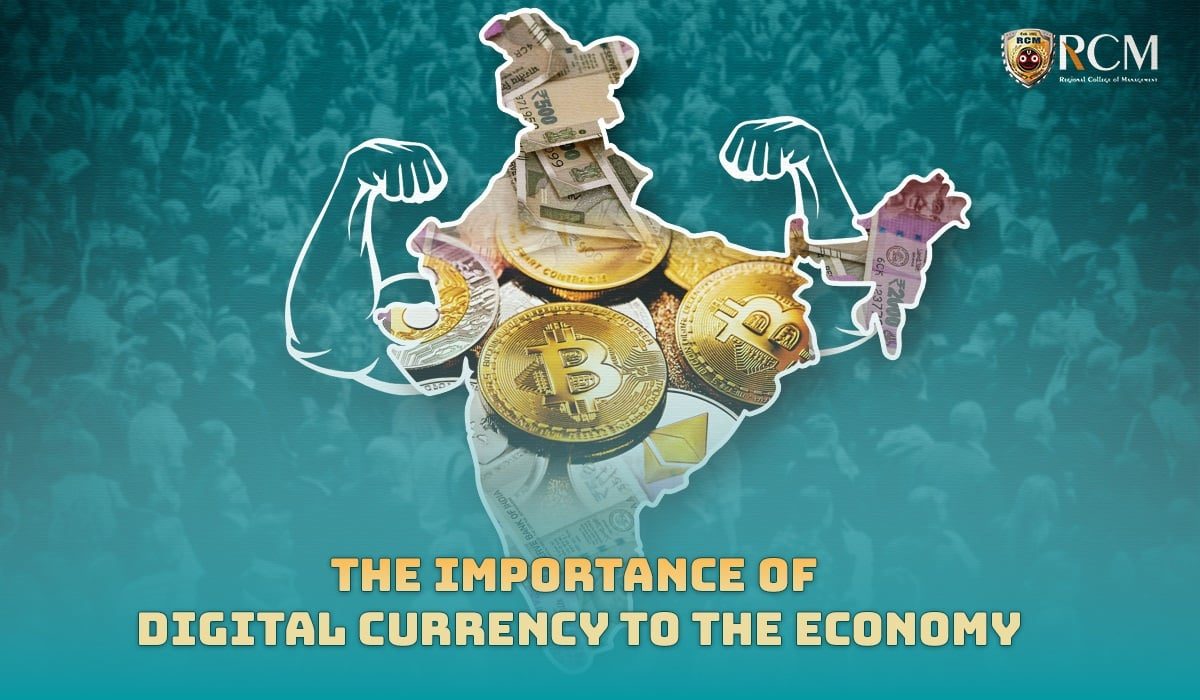The term “digital currency” refers to money that is only available digitally or electronically. This digital form of currency is picking up the pace, in this blog, will concentrate on digital currency, its fundamentals, and its importance to the Indian economy.
What is digital currency?

As we have already defined above, it refers to money that is specifically available in digital or electronic format. In other words, It can also be considered as digital money, cybercash, electronic money, or electronic currency.
Money is a tangible kind of value, similar to gold, silver, or diamonds. It is a medium of trade that may be used to purchase goods and services. Money has inherent value.
Technically, the euros and dollars in your wallet do not constitute money. They are monetary units. Currencies are a means of transferring money value, such as when buying something or paying someone. They indicate worth.
The question of whether money itself can ever be digital is an interesting one. Currencies can surely be. For many years, we have used digital transactions to transfer value representations. How many of us still sign credit card receipts to confirm a purchase?This Digital currency transaction is carried out via electronic wallets or computers linked to the internet or specific networks.
Types of Virtual Currencies

- Cryptocurrencies
Not all cryptocurrencies are digital money, and not all digital money are cryptocurrencies. It have the capacity to transmit value in real-time while also cutting transaction costs.
Bitcoin is the most well-known example of a limited group of technological building blocks that make cryptocurrency viable. The Blockchain protocol supports Bitcoin and several other cryptocurrencies. It is built on a clever combination of existing technologies such as cryptographic signatures (thus the name crypto), peer-to-peer networks, and hash functions.
Blockchain is also known as distributed ledger technology (DLT). It establishes confidence and traceability in a digital workflow, such as Bitcoin payments. Because of a variety of concerns, the first generation of cryptocurrencies, such as Bitcoin, sparked a lot of excitement as well as some critical attention.
- Central Bank Digital Currency
Central bank digital currencies (CBDCs) are digital currencies that are regulated and issued by a country’s central bank. A CBDC can be used to supplement or replace regular traditional currencies. In contrast to fiat currency, which exists in both physical and digital forms, a CBDC only exists in digital form.
The Importance of Digital Currency:

- A more secure form of means:
Because It often operates within the same network and performs transfers without the use of intermediaries, the time required for this currency transfer is exceptionally short. Payments using these platforms are frequently quick and low-cost because they are made directly between the transacting parties without the need for any intermediaries.
CBDCs, (Central Bank Digital Currency) like paper cash, are the central bank’s direct liabilities, making them a more secure type of digital money. This is analogous to the situation in which everyone has a checking account with the central bank.
- The end of paper money:
The central bank will hold everyone’s cash and clear all transactions. There will be no need to convert paper money into digital money because a CBDC unit is a direct liability of the central bank, equivalent to paper money, rendering cash obsolete. People will no longer need cash shops, and there will be fewer places to put cash and other valuables.
- Policy implementation and regulation will be simpler:
All transactions in a system can potentially be tracked using data analytics and artificial intelligence to rapidly identify banks that are failing or engaging in unreliable operations. In a CBDC world where digital bank codes are accessible to the clearing institution, authorities may identify the parties to a transaction much more easily, which greatly simplifies the discovery of criminal behaviors and eliminates black markets that deal primarily in physical money.
- Greater diversity:
The transactions do not require a bank account, which is important in developing countries where one-third of the population does not have access to traditional money but does have a mobile internet connection. An unbanked Indian customer can effortlessly transact using a mobile app if they have an Aadhar number and a smartphone. This means that governments around the developed world will soon integrate those who were previously prohibited from the financial system.
- Overcoming International Distinctions:
It has the potential to make payment systems more real-time and cost-effectively global. Without the use of a middleman, an Indian buyer can pay an American exporter in digital dollars in real-time. This transaction would be complete, just like handing over cash in dollars, and it would not even necessitate the availability of the US Federal Reserve system for settlement. Time zone variations would no longer affect currency settlements.
The First Step Towards a Cashless Society
Faced with declining paper currency usage, central banks attempt to popularise a more accepted electronic form of currency. They are aiming to meet the public’s demand for digital currencies, as indicated by the growing use of private virtual currencies while avoiding the more negative consequences of such private currencies.
CBDCs can provide users with benefits such as liquidity, scalability, acceptance, transaction convenience, anonymity, and faster settlement. CBDC adoption will improve and become easier for individuals to use with the government’s support infrastructure, much like how UPI made it easier to use digital money. Financial institutions can use the digital rupee for programmable payments for subsidies and speedier lending and payments.
In the near future, there may be a pragmatic shift to a cashless economy. This might help the government’s goal of cashless payments and benefit the banking sector. Cross-border remittances may benefit from the rise of the digital rupee. An atmosphere for interoperability could be created, leading to a cashless economy.




















